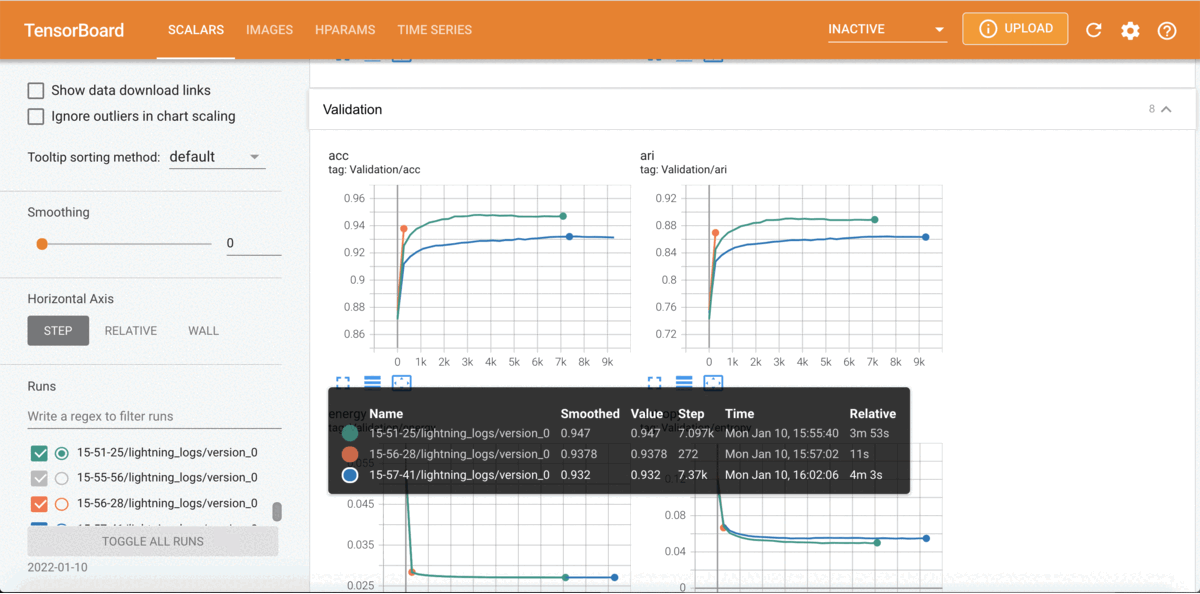The Mixture Model Auto-Encoders (MixMate) is a neural network architecture for clustering data that is derived from a generative model based on dictionary learning. Further details can be found in our preprint here.
This codebase contains the implementation of the model, supporting parallel computation and batch training. To run the code, execute the following commands:
git clone https://github.com/al5250/mixmate
cd mixmate
pip install -r requirements.txt
python trainv2.pyAll results will be logged in your outputs folder (if it does not exist, it will be created after running python trainv2.py the first time). Runs are logged according to the clocktime that they are executed. For example, to see a run executed on January 2nd, 2022 at 1:11 PM, execute
cd outputs
cd 2022-02-01
tensorboard --logdir .The run will be stored as 13-01-11/lightning_logs/version_0. Through TensorBoard, our code logs many metrics, images (e.g. dictionary columns that are learned), and hyperparameters associated with each run.
To play around with different experimental settings (e.g. datasets, hyperparameters) check out the configs/trainv2.yaml file. Our codebase is powered by Hydra. Editing this one config file is sufficient for reproducing all experiments in our paper. After saving the changes, simply execute python trainv2.py to see the new results in your outputs folder.
- Running default config file: This reproduces the MNIST clustering experiments in Table 1 of our paper. You can run it multiple times to see results from multiple runs.
- FashionMNIST and USPS results: Simply change the
dataset.nameattribute in the config file to reproduce the results in Table 1 for these datasets. USPS will also require settingmixmate.input_size: 30andmixmate.sparse_penalty: 0.25since its image are 3x smaller. - The effect of varying the sparsity penalty: Simply change the
mixmate.sparse_penaltyattribute for different values to re-create Figure 3 in the paper. - Missing data experiments: To see how MixMate can handle missing data according to the paper, simply set
mixmate.erase_prob: 0.90andmixmate.erase_frac: 0.25. - Training the prior probabilities/biases: Simply set
mixmate.freeze_bias: Falsein the config. This does not have a significant impact on results for the datasets considered in the paper. - Different algorithms for initialization: Simply change the
init_algparameter in the config. Available options arekmeans,spectral, andssc.
Our internal code is comprised of three main directories:
mixmate/datasets: This contains the implementation for pulling the datasets from PyTorch.mixmate/ista: This contains the implementation of the fast iterative shrinkage-thresholding algorithm (FISTA), optimized for parallel computation with several different dictionaries.mixmate/mixture: This contains the implementation of our model in themodulev2.pyfile.
Additionally, the ssc.py file contains code for running SSC initialization for our method.
If this repository is useful for your work, please consider citing our paper:
@inproceedings{lin2022mixture,
title={Mixture Model Auto-Encoders: Deep Clustering through Dictionary Learning},
author={Lin, Alexander and Song, Andrew H and Ba, Demba},
journal={IEEE International Conference on Acoustics, Speech, and Signal Processing},
year={2022}
}
